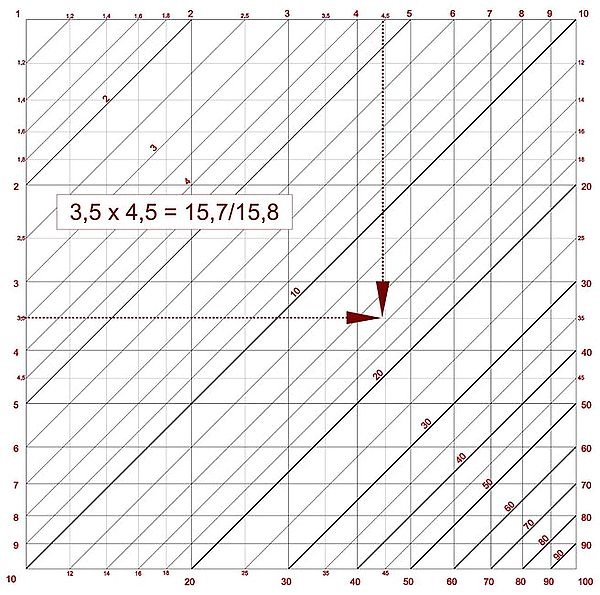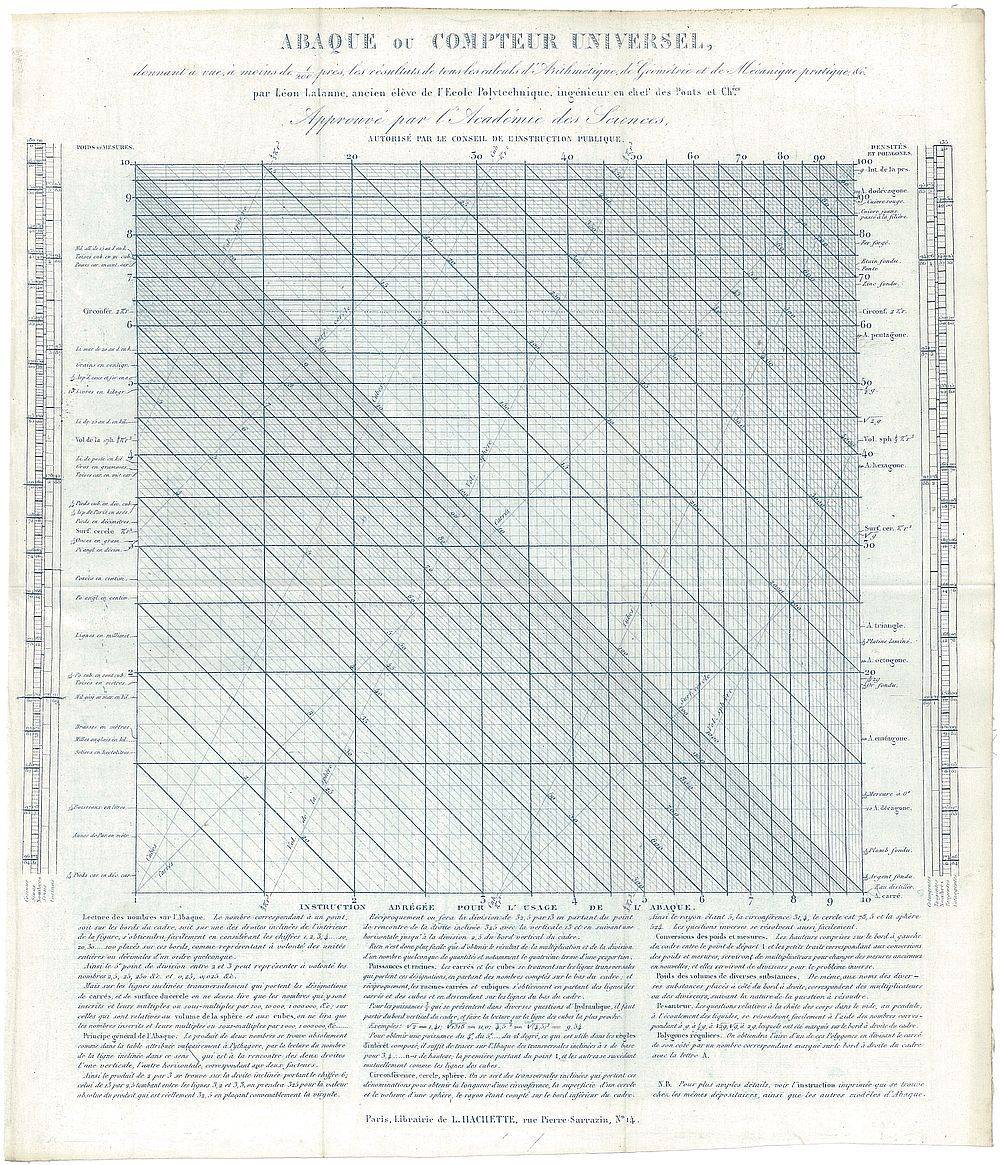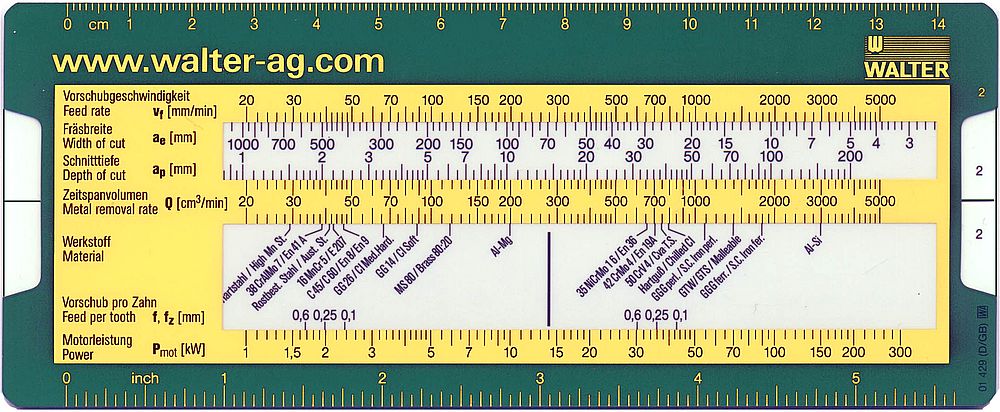Download the nomograph with the instructions
Abaque and nomogram
In 1844 Leon Lalanne created the Abaque Compteur, introducing the nomography.
The modern nomography was invented in 1884 by Maurice d'Ocagne, who replaced the Cartesian coordinates with a system of parallel scales: the nomogram was born.
In the Abaque the product of x and y is found from their intersection with the 45 lines.
Below there is a semplificated example but the original plot is able to perform also squares, cubes, roots and various engineering and chemical formulas.
Lalanne called his table "abaque".

Leon Lalanne envisioned many copies of his Universal Calculator posted in public squares and business meeting places for popular use but today is very rare.

The original "Abaque Compteur"
This system never had success hoped and was gradually abandoned for the more practical nomography.
The nomography was invented, as an easier replacement of the a abaques. In 1884 by Maurice d'Ocagne who replaced the Cartesian coordinates of the first calculating tables with a system of parallel scales.
The nomogram or nomograph, in its simplest form consists of three scales. The two external identify the values of the problem to solve, and joining them with a ruler you can read the result of the intersection with the central staircase. The scales may be linear or logarithmic. Simple calculations are shown on straight lines but it is sometimes necessary to draw them in a circular shape.
The nomography allowed everyone to perform calculations with ease. It is sufficient to draw one or more lines without even having to know the equation that is being solved. A great help before the advent of the electronic calculators.
The nomograms are still widely used for military uses in medicine and aviation. They are quick to use and the results are sufficiently precise, and for the solution of specific problems are unsurpassed. This represented below is extremely intuitive. Simply combine with a ruler the values of our weight and our height to know if we should just put on a diet.

Height and weight nomogram
How to calculate with the nomography
To multiply connect with a ruler the two factors A and B of the outer scales and read the result in the central scale. To divide reverse the process. You can also square and cube a number (or do the square and cubic root). In the examples the red line is 2x5=10 or 10/2=5 or 10/5=2. The blue line is 6x3=18 or 18/3=6 or 18/6=3.

Now we can try this operation: √350 / 1,51
- Now we can try this operation: √350 / 1,51 • to the left of 3.5 of the A2 scale we find on the A scale the square root of 350: 18.7;

- now we connect 18.7 on the AxB scale with 1.51 of the A scale: on the B scale we can read the answer: ca. 12.39. A calculator would have been just a little more precise, finding 12.3896.

The slide rule work on the same principle, but this slight approximation has not prevented Von Braun to design space stations and send men on the Moon. Calculating with this system is in fact less difficult than it sounds and the secret is just to be accurate and to practice.
Le slide chart
Slide charts, or infographics, are nomograms inserted into a cardboard cover and programmed to solve specific calculations. They are equivalent to modern smartphone apps, if they are circular in shape they are called Volvelle.
It was Matthew Paris, a Benedictine monk of 1200, the first to integrate one into a book, still not logarithmic. They are still very popular today, in fact they find a quick solution to many practical problems.

Volvelle from Astronomicum Caesareum, Petrus Apianus, 1540

Nomogram for metric - imperial conversions

Nomogramma per tornitore

Volvelle for commercial calculations
Nomography links:
The Nomogram on Wikipedia
Slide chart on Wikipedia
Volvelle on Wikipedia
The Nomography on KASS
© 2004 - 2025 Nicola Marras Manfredi
